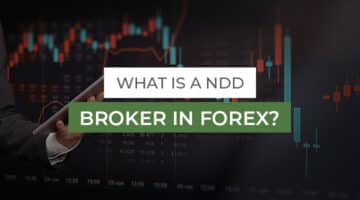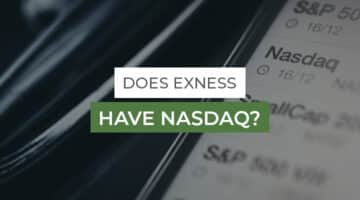Forex Trends
In this article
The trend is a tendency for prices to move in a specific direction simultaneously. Forex trends can be long-term, short-term, up, down, and even sideways.
Investing in the foreign exchange market is tied to the investor’s ability to identify trends and place profitable entry and exit points. This article examines the stages of the forex trend and how it affects investors.
What are the forex trends?
Trading trends can be defined as the general price direction or asset. It is based on analysing historical data and price movements to predict what will happen in the future.
It is a strategy that uses technical indicators to determine a particular market movement or momentum. Thus, it is related to the assumption that markets have an element of predictability.
Trading trends are significant because they ultimately relate to how successful or effective a trader is in their market.
What are the most common types of forex trends?
1. Upward trend
This trend is a price movement where the general direction is upward or positive. It usually has continuous and regular peaks and valleys that are higher than before.
2. Downtrend
Also known as a declining trend or a bearish trend refers to a price action that moves lower as it fluctuates over time. In contrast to uptrends, it is characterised by lower peaks and valleys.
3. Flat or side trends
If we are not talking about a flat or side trend, the price will move without a clear path – up or down. These trends are often chaotic and are likely to occur when the forces of supply and demand are almost identical.
How to trade the forex trend?
“Trend is your friend until it finally changes” is a recognised phrase of the forex trading community. Trend trading makes your job easier (getting money from the market). You don’t want to be the opposite; you follow the trend until you think you are tired.
Trend trading is one of the most reliable, predictable, and safest ways to trade FX markets. Moreover, many traders argue that you do not take much risk if you trade in a suitable fashionable way.
Your skill includes the timing of your inputs and outputs to ensure sufficient movement and profit.
How can you find a trend? Ways to follow
Trend lines and price action patterns are the two most direct methods that many forex traders use to identify trends.
1. Trend lines
With the bullish trend line, you’ll see your time frame and see if you can draw a line below the recent move, indicating that the currency pair’s price remains higher. The opposite analysis applies to the bearish trend.
Very few movements in our FX markets have smooth straight lines for long periods. So you draw a trend line for solid movement, where the price stretches back and forth to test the direction.
If the price falls again, the line will try to break, but it remains a strong trend, indicating that sentiment is still strong. Just as the price is still reaching new heights, it also indicates that the force is strong.
Drawing trend lines on graphs couldn’t be easier. If you want them to be long or short, draw the lines so that they are high or low. For example, you can draw a trend line above and below the price and see if the channel is available.
As the channel expands, the current momentum continues. If the channel narrows, the movement may end.
2. Candle price promotions
The concept of higher high and lower low is one of the fundamental aspects of forex trading. You analyse your charts to see if the price creates higher highs for strong moves or lower lows for bearish moves.
If so, in what time frame (or combination of time frames) do you decide, then the dynamics and trend are likely to continue.
Trend changes often occur when new highs and lows stop printing. So if you see lower highs or higher lows in your candle patterns, then the pair’s price can consolidate and prepare them for turnover.
Identify forex trends: The techniques to follow as a trader
3. Moving average crossover
A moving average crossover is yet another way to identify a trend. For example, many investors look at the exchange rates of currency pairs on a chart that tracks the moving average.
Crossing occurs when the short-term moving average of the currency pair’s price rises or falls below the longer-term moving average of the currency pair’s price.
For example, if the five-day moving average of a currency pair’s price is greater than the 20-day moving average of a currency pair’s price, a trend may occur.
4. Price action
The currency pair’s price will fluctuate during the day and generate high prices and short prices. If the high price of a currency pair is higher than the maximum from the previous day, it creates a “higher maximum.”
If the price of a currency pair is lower than the minimum from the previous day, a “low minimum” is created. The higher maximum of the currency pair in combination with the higher minimum of the currency pair also reflects the trend of Forex.
For example, an upward trend is appropriate if a currency pair creates three consecutive higher lows and three consecutive higher lows. But three consecutive low lows together with three consecutive low lows indicate a downward trend.
5. Combining techniques
A combination of techniques can also identify trends. For example, combining successive higher moving average levels with a moving average transition can prove an upward trend.
The investor can also combine price action and moving averages to determine the trend. For example, a series of higher altitudes accompanied by an increase in the moving average may confirm an improvement.
Technical indicators involved in forex trends
So let’s look at a few of the most popular trend technical indicators, some simple, some somewhat complicated. Let’s look first at the most direct feature of the trend, the moving average.
1. Moving average
As the name suggests, the indicator streamlines past price data by creating a line. It works when the average price changes.
The easiest way to make sure you’re on the right side of the trend is to trade at or below the moving average (MA). For example, if the price remains above the moving average for a long time, the market is considered vital and on a rising trend!
If the moving average is above the price, the market is bearish and in a downward trend.
This observation is one of the easiest ways to make sure you sell fashion. Whether you are a day, swing, or position trader, your trading decisions will change, but the principle remains the same.
MA below cost corresponds to consolidation conditions; the above corresponds to bearish in any time frame you prefer.
Continuing this analysis, many traders lengthen when the MA is below the FX pair’s price and only shorten when the MA is above the price.
A typical business strategy combines two moving averages to assess whether there has been a sudden change in sentiment. First, traders choose a fast-moving and slow-moving MA, and if they move, they will make trading decisions.
For example, they can choose a 5-day MA and 21 MAs in a 4-hour or daily time frame, and if they do, traders will conclude that the current trend has come to an end.
They can choose the so-called EMA, the exponential moving average, over standard smooth MAs because EMAs provide more dynamic information.
You enter high positions when the fast EMA crosses the slow EMA of the bottom, and you descend when the fast EMA crosses the slow EMA of the high cross.
2. Relative Strength Index (RSI)
The relative strength index (RSI) shows price dynamics and signals overbought or oversold conditions. It measures average gains and losses over several iterations by calculating whether many price movements are positive or negative.
The RSI fluctuates on a scale between 0 and 100. If the indicator moves above 70, the market is considered overbought! A value below 30 is a sign of a market oversold. Entrepreneurs use this level as a signal that the trend is ending.
Trendy traders in high positions use overbought signals to lock down their profits and close the trade. At the same time, a short-sighted trader can use the overbought signal as an entry point.
In the opposite scenario, trend traders use the oversold signal as a point to end short trades and longer endurance.
3. Moving Average Divergence (MACD)
MACD is a trend tracking indicator that shows momentum by illustrating the relationship between two moving averages. It is a popular and valuable technical indicator, which new and experienced traders prefer.
The MACD can be calculated by subtracting the 26-fold exponential moving average (EMA) from the 12-fold EMA. The resulting calculation is the MACD line.
There is a histogram that usually appears in two lines. As a visual challenge, traders can use a histogram to show bear and bull conditions.
The MACD triggers technical signals when it crosses its signal line or below it. For example, above the signal line is a purchase signal; below is the sales signal.
The speed of any crossover can be a signal of an overbought or oversold brand. MACD can determine if bullish or bearish movement is strengthening or weakening.
Important points to keep in mind to take advantage of the forex trend
The trader bypasses the trend and gets it, the look still goes his way, but there are currents back to his genuine reason, which reduces his profits. As his profit grows, he is more inclined to gain it than it disappears, and the more the price falls, the more tempting it is to sell it.
Forex trends always last longer than most traders expect, and when you enter one, you have to stop it, which means that you will keep in mind three important points:
- If the trend is strong and you are sure it will continue, stop and watch it out of regular order.
- Accept that short-term price changes are more against you. Just get used to short-term losses of available capital and keep an eye on more significant rewards.
- You have to come to terms with the fact that you will return a large piece of its turn if the trend changes because you are following a wide track. Remember, you don’t want perfection; you want to make money.
- Remember that you will make money if you only get a 50% discount on each major forex trend.
Frequently Asked Questions (FAQs)
1. What is the trend in financial markets?
The trend in Forex, stock market, etc., is whether the market will move higher or lower during a specific period. This indicates whether buyers (uptrend) or sellers (downtrend) have control.
2. How do you identify the trends?
In my experience, the best way to identify trends is to use simple price action. Higher highs and lower lows signal an upward trend, while lower highs and lower lows represent a downward trend.
3. What are the three types of trends?
A long-term (secular) trend is a trend that lasts five years or more. A medium (primary) trend is a trend that lasts one year or more. The short-term (second) trend is a trend that lasts from weeks to months.
4. What is the best trend indicator in Forex?
It’s incredibly subjective, but one of the most vital indicators of trend is the raw price. No more indicators are needed because market fluctuations up and down will tell you everything you need to know.
5. How do you recognise a trend change?
Changes occur as the market moves higher and higher (it begins to form lower highs and lower lows). On the other hand, the market is showing a declining trend in a declining trend as higher levels begin to decline, followed by higher lows.
Final thoughts
It is best to deal with a trend, but be alert when it is out and there is a point of correction or change.
By observing and listening to market sentiment, tracking reports, and using technical analysis to help you with time and outputs, you should be able to create a rules-based system that is useful and easy to implement.
Jason Morgan is an experienced forex analyst and writer with a deep understanding of the financial markets. With over 13+ years of industry experience, he has honed his skills in analyzing and forecasting currency movements, providing valuable insights to traders and investors.
Forex Content Writer | Market Analyst
Relevant Posts

IC Markets Minimum Deposit
[top_three_brokers] [single_affiliate title="" id="3974" size="big"] IC Markets minimum deposit is extremely low, making this broker…
Read more

Forex Trading Patterns
[top_three_brokers] In a forex market, forex trading patterns are the ultimate trails that lead investors to perform…
Read more
Symmetrical Triangle Pattern
[top_three_brokers] According to the chart pattern analysis, a symmetrical triangle pattern is formed when the…
Read more

Deriv Deposit
[top_three_brokers] [single_affiliate title="" id="6070" size="big"] Deriv offers several methods for depositing and withdrawing funds. Deriv…
Read more

Trade245 Real Account Registration
[top_three_brokers] [single_affiliate id="11853" size="big"] Would you like to know about the Trade245 real account registration?…
Read more

What is an NDD broker in Forex?
[top_three_brokers] Did you know what an NDD broker is in Forex? It is a foreign…
Read more
IC Markets Bonus Promotion
[top_three_brokers] [single_affiliate title="" id="3974" size="big"] If you are ready to open your live trading with…
Read more

NFP Forex – Non Farm Payroll
[top_three_brokers] Non-Farm Payroll, NFP, is one of the most volatile and significant economic indicators released…
Read more

Does Exness Have Nasdaq?
[top_three_brokers] [single_affiliate title="" id="3178" size="big"] Many of you might ask, does Exness have NASDAQ? You…
Read more

How to trade forex with $100?
[top_three_brokers] Many people think trading forex requires plenty of money. But this is not the…
Read more

IC Markets Minimum Deposit
[top_three_brokers] [single_affiliate title="" id="3974" size="big"] IC Markets minimum deposit is extremely low, making this broker…

Forex Trading Patterns
[top_three_brokers] In a forex market, forex trading patterns are the ultimate trails that lead investors to perform…
Symmetrical Triangle Pattern
[top_three_brokers] According to the chart pattern analysis, a symmetrical triangle pattern is formed when the…

Deriv Deposit
[top_three_brokers] [single_affiliate title="" id="6070" size="big"] Deriv offers several methods for depositing and withdrawing funds. Deriv…

Trade245 Real Account Registration
[top_three_brokers] [single_affiliate id="11853" size="big"] Would you like to know about the Trade245 real account registration?…

What is an NDD broker in Forex?
[top_three_brokers] Did you know what an NDD broker is in Forex? It is a foreign…
IC Markets Bonus Promotion
[top_three_brokers] [single_affiliate title="" id="3974" size="big"] If you are ready to open your live trading with…

NFP Forex – Non Farm Payroll
[top_three_brokers] Non-Farm Payroll, NFP, is one of the most volatile and significant economic indicators released…

Does Exness Have Nasdaq?
[top_three_brokers] [single_affiliate title="" id="3178" size="big"] Many of you might ask, does Exness have NASDAQ? You…

How to trade forex with $100?
[top_three_brokers] Many people think trading forex requires plenty of money. But this is not the…



